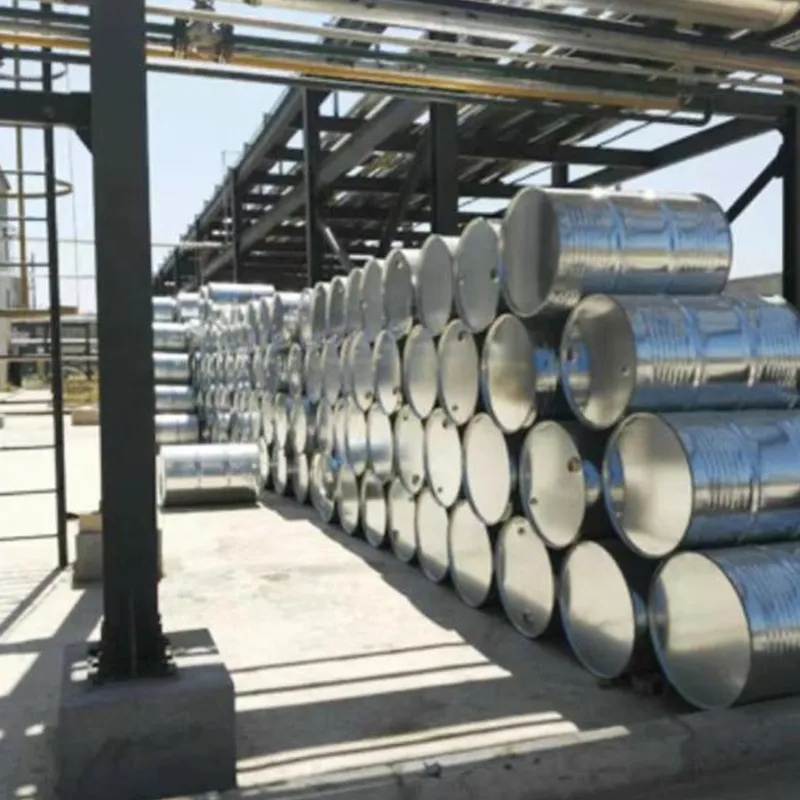
vegetable emulsifier
The Role of Vegetable Emulsifiers in Food Products
In the realm of food science and culinary arts, emulsifiers play a crucial role in the texture, stability, and overall quality of various products. Among these, vegetable emulsifiers have gained significant attention due to their natural origins and health benefits. Derived from plant sources, these emulsifiers are extensively used in the food industry to improve the consistency and shelf life of a diverse range of products.
Understanding Emulsifiers
Emulsifiers are substances that help combine two immiscible liquids, such as oil and water, into a stable mixture called an emulsion. They work by reducing the surface tension between the liquids and creating a barrier that prevents them from separating. This process is essential in many food applications, from salad dressings to ice creams, where a smooth and uniform texture is desired.
Types of Vegetable Emulsifiers
There is a variety of vegetable emulsifiers available, each with unique properties and applications. Some common examples include
1. Lecithin Extracted from soybeans, sunflower seeds, or eggs, lecithin is one of the most widely used emulsifiers in the food industry. It not only stabilizes emulsions but also acts as a natural antioxidant, improving the shelf life of products.
2. Guar Gum Sourced from the guar bean, this polysaccharide is often used in gluten-free baked goods to enhance texture and retain moisture. Guar gum helps stabilize emulsions and provides a creamy consistency, making it a popular choice in dairy alternatives.
3. Xanthan Gum Produced through the fermentation of sugars by the bacterium Xanthomonas campestris, xanthan gum is known for its thickening and emulsifying properties. It is often used in salad dressings, sauces, and gluten-free products to improve stability and mouthfeel.
vegetable emulsifier

4. Agar-Agar Derived from red algae, agar-agar serves as both a gelling agent and emulsifier. It is widely used in desserts and jellies, providing a unique texture while maintaining a stable emulsion.
5. Carob Bean Gum Also known as locust bean gum, this emulsifier is derived from the seeds of the carob tree. It is often used in combination with other thickening agents to stabilize emulsions and enhance the texture of various food products.
Benefits of Vegetable Emulsifiers
A significant advantage of using vegetable emulsifiers is their natural origin. Consumers today are increasingly wary of synthetic additives and prefer products that are clean-label and free from artificial ingredients. Vegetable emulsifiers meet this demand by providing functional properties without compromising health.
Moreover, vegetable emulsifiers often contain additional nutrients compared to their synthetic counterparts. For example, lecithin is rich in phospholipids, which play a crucial role in brain health and cellular function. In addition, many plant-based emulsifiers are gluten-free, making them suitable for individuals with gluten sensitivities or celiac disease.
Applications in the Food Industry
Vegetable emulsifiers are versatile and find applications across various sectors of the food industry. In baked goods, they contribute to moisture retention and improve shelf life. In dairy products like yogurt and non-dairy alternatives, they provide creaminess and prevent separation. Furthermore, in sauces and dressings, vegetable emulsifiers ensure a consistent and appealing texture, enhancing the overall eating experience.
Conclusion
Vegetable emulsifiers are indispensable in modern food production, offering natural solutions to enhance stability, texture, and nutritional value. As consumer preferences shift towards healthier and more natural food options, the demand for vegetable emulsifiers will likely continue to grow. By understanding their benefits and applications, food manufacturers can create high-quality products that meet the evolving needs of consumers, ensuring satisfaction in a competitive market.
-
Buy High-Quality Trichloroisocyanuric Acid for Sale | TCCA 90% SupplierNewsAug.30,2025
-
Pure Sodium Dichloroisocyanurate Dihydrate | Powerful DisinfectantNewsAug.29,2025
-
Industrial Chemicals: Quality & Purity for Every IndustryNewsAug.28,2025
-
Nitrile Rubber Honoring Strict Production StandardsNewsAug.22,2025
-
Aspartame Ingredients Honoring Food Safety ValuesNewsAug.22,2025
-
Fertilizer for Balanced Plant NutritionNewsAug.22,2025
-
Cyanide Gold Processing with High Purity AdditivesNewsAug.22,2025
Hebei Tenger Chemical Technology Co., Ltd. focuses on the chemical industry and is committed to the export service of chemical raw materials.
-

view more DiethanolisopropanolamineIn the ever-growing field of chemical solutions, diethanolisopropanolamine (DEIPA) stands out as a versatile and important compound. Due to its unique chemical structure and properties, DEIPA is of interest to various industries including construction, personal care, and agriculture. -

view more TriisopropanolamineTriisopropanolamine (TIPA) alkanol amine substance, is a kind of alcohol amine compound with amino and alcohol hydroxyl, and because of its molecules contains both amino and hydroxyl. -

view more Tetramethyl Thiuram DisulfideTetramethyl thiuram disulfide, also known as TMTD, is a white to light-yellow powder with a distinct sulfur-like odor. It is soluble in organic solvents such as benzene, acetone, and ethyl acetate, making it highly versatile for use in different formulations. TMTD is known for its excellent vulcanization acceleration properties, which makes it a key ingredient in the production of rubber products. Additionally, it acts as an effective fungicide and bactericide, making it valuable in agricultural applications. Its high purity and stability ensure consistent performance, making it a preferred choice for manufacturers across various industries.





